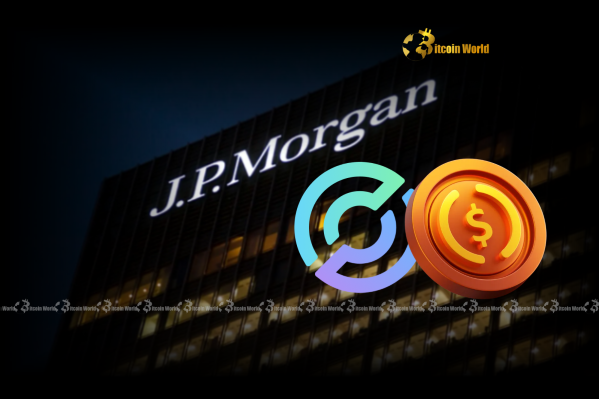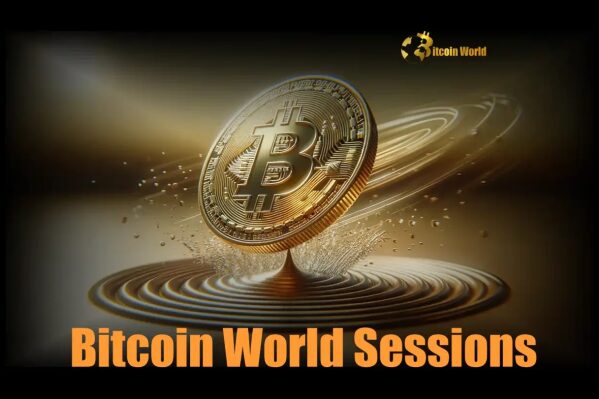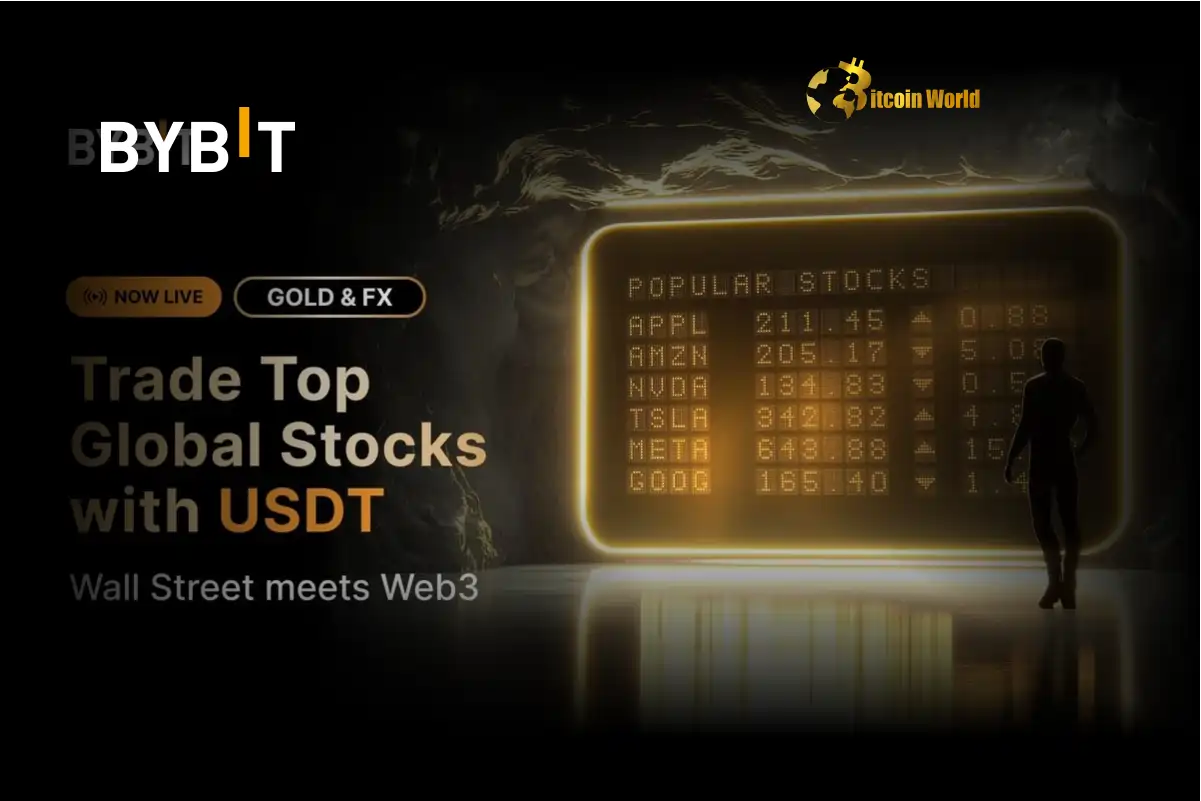BitcoinWorld

JPMorgan’s Startling $80 Circle Price Target: Navigating Stablecoin Challenges
The cryptocurrency world is abuzz with the latest report from American multinational investment bank JPMorgan, which has set a striking JPMorgan Circle price target of $80 for Circle (CRCL) shares by December 2026. This isn’t just a number; it’s a profound statement that sends ripples through the stablecoin sector, prompting a closer look at the future trajectory of digital assets and the companies underpinning them.
What Does JPMorgan’s $80 Target Signify for Circle?
JPMorgan’s analysis, as reported by Cointelegraph, delves deep into the potential headwinds facing Circle, the issuer of the USDC stablecoin. While an $80 price target might sound optimistic on the surface, the context is crucial. The investment giant cites significant concerns about escalating competition within the stablecoin market and the ever-evolving landscape of cryptocurrency regulation challenges. Moreover, the looming presence of central bank digital currencies (CBDCs) is highlighted as a potential disruptor.
The core of JPMorgan’s apprehension stems from the belief that Circle’s current $43.8 billion market capitalization may be overvalued, considering these impending challenges. It suggests that while Circle is undoubtedly a pivotal player, its growth trajectory might be constrained by external forces that are rapidly shaping the digital finance ecosystem.
Understanding Circle’s Position in the Stablecoin Market
Circle Internet Financial is a key entity in the cryptocurrency space, primarily known for co-founding and operating USDC, one of the largest dollar-pegged stablecoins. USDC plays a vital role in the crypto economy, facilitating trades, remittances, and decentralized finance (DeFi) activities by offering a stable digital asset that aims to maintain a 1:1 peg with the US dollar.
Circle’s business model relies on the reserves backing USDC, earning revenue from the interest generated on these reserves and from enterprise services related to USDC. Its commitment to transparency and regulatory compliance has positioned it as a trusted player, often contrasted with other stablecoin issuers.
What Are the Primary Concerns Driving JPMorgan’s Analysis?
JPMorgan’s cautious outlook is built on several pillars of concern, each representing a significant challenge to Circle’s long-term profitability and market dominance.
1. The Intensifying Stablecoin Market Future Competition
The stablecoin landscape is far from static. While USDC and Tether (USDT) currently dominate, the market is attracting new entrants and innovations. This increasing competition could dilute Circle’s market share and put pressure on its revenue streams. Consider:
- New Fiat-Backed Stablecoins: More traditional financial institutions and tech giants might launch their own stablecoins, leveraging their existing customer bases and regulatory relationships.
- Algorithmic Stablecoins: Although some have faced challenges, the innovation in decentralized, algorithmically managed stablecoins continues, offering alternatives to centralized, fiat-backed options.
- Foreign Currency Stablecoins: The rise of stablecoins pegged to other fiat currencies (e.g., EUR, JPY) could fragment the market further, reducing the dominance of USD-pegged stablecoins.
This evolving competitive environment demands constant innovation and adaptation from Circle to maintain its edge.
2. The Transformative CBDC Impact on Crypto
Perhaps the most significant long-term threat identified by JPMorgan is the advent of central bank digital currencies (CBDCs). These are digital forms of a country’s fiat currency, issued and backed by its central bank. The implications for private stablecoins like USDC are profound:
| Feature | Private Stablecoins (e.g., USDC) | Central Bank Digital Currencies (CBDCs) |
|---|---|---|
| Issuer | Private companies (e.g., Circle) | Central Bank (e.g., Federal Reserve) |
| Backing | Reserves (cash, T-bills) held by issuer | Full faith and credit of the government |
| Purpose | Bridge crypto to fiat, DeFi, remittances | Enhance payments, financial inclusion, monetary policy |
| Risk Profile | Counterparty risk, reserve transparency risk | Minimal to no counterparty risk |
Should major economies like the U.S. launch their own CBDCs, it could potentially diminish the need for private stablecoins for everyday transactions and even for large-scale institutional use, as CBDCs would offer the ultimate form of risk-free digital money. This scenario could severely impact Circle’s market share and its overall Circle valuation concerns.
3. Navigating Cryptocurrency Regulation Challenges
The regulatory environment for cryptocurrencies, particularly stablecoins, is in a state of flux globally. Governments and financial authorities are increasingly scrutinizing stablecoins due to their potential systemic risks, especially if they achieve widespread adoption. Key regulatory developments include:
- The MiCA Regulation in Europe: The Markets in Crypto-Assets (MiCA) regulation in the European Union sets comprehensive rules for stablecoin issuers, including capital requirements and operational standards.
- U.S. Stablecoin Legislation: The U.S. Congress is actively debating legislation that would establish a clear regulatory framework for stablecoins, potentially classifying them as securities or commodities, or creating a new category.
- Global Coordination: International bodies like the Financial Stability Board (FSB) and the Bank for International Settlements (BIS) are working on global standards for crypto assets, aiming for a consistent approach to mitigate risks.
While Circle has proactively engaged with regulators, stricter regulations could impose higher compliance costs, limit operational flexibility, or even restrict the stablecoin’s use cases, thereby impacting its profitability and growth prospects.
Despite Concerns, Why is Circle Still ‘Well-Positioned’?
It’s important to note that despite the bearish outlook on valuation, JPMorgan still acknowledges that Circle is “well-positioned” in the stablecoin market. This dual perspective highlights Circle’s inherent strengths:
- Transparency and Trust: Circle’s commitment to regular attestations of its USDC reserves and its proactive engagement with regulators have built a significant level of trust among users and institutions.
- Institutional Adoption: USDC is widely used by institutional players for various purposes, including cross-border payments, trading, and collateral in DeFi, indicating strong foundational demand.
- Technological Infrastructure: Circle has robust technological infrastructure supporting USDC, ensuring its stability, security, and scalability across multiple blockchain networks.
These factors provide a strong base, but they may not be enough to fully counteract the macro forces of competition, CBDCs, and regulation that JPMorgan has highlighted.
What Does This Mean for Investors and the Broader Crypto Market?
For investors, JPMorgan’s analysis serves as a crucial reminder of the inherent risks and complexities in the rapidly evolving digital asset space. While stablecoins offer stability within the volatile crypto market, the entities issuing them are subject to traditional financial pressures and emerging digital threats.
- Diversification: Investors might consider diversifying their stablecoin holdings across different issuers and types to mitigate specific issuer risks.
- Regulatory Watch: Keeping a close eye on global regulatory developments, especially concerning stablecoins and CBDCs, will be paramount.
- Market Dynamics: Understanding the competitive dynamics within the stablecoin sector is key to assessing the long-term viability of individual projects.
The report underscores that even established players like Circle are not immune to market shifts and regulatory headwinds. The stablecoin market future is not just about technological innovation; it’s also about navigating a complex interplay of economic, political, and competitive forces.
The Road Ahead: Navigating Uncertainty in the Digital Economy
JPMorgan’s $80 JPMorgan Circle price target for Circle is more than just a financial forecast; it’s a call to attention for the entire cryptocurrency ecosystem. It highlights the profound challenges that private stablecoins face from increasing competition and the inevitable rise of central bank digital currencies. While Circle has built a strong foundation based on trust and transparency, its ability to adapt to a rapidly changing regulatory landscape and intense market rivalry will be paramount to its long-term success.
The future of digital money is a battleground where innovation, regulation, and market forces will constantly redefine the landscape. Circle’s journey to December 2026 will be a telling indicator of how private stablecoins can thrive—or merely survive—in an increasingly centralized and regulated digital financial world. The Circle valuation concerns raised by JPMorgan are a sober reminder that even in the crypto realm, fundamental analysis and foresight remain indispensable.
To learn more about the latest crypto market trends, explore our article on key developments shaping the stablecoin market’s institutional adoption.
This post JPMorgan’s Startling $80 Circle Price Target: Navigating Stablecoin Challenges first appeared on BitcoinWorld and is written by Editorial Team





